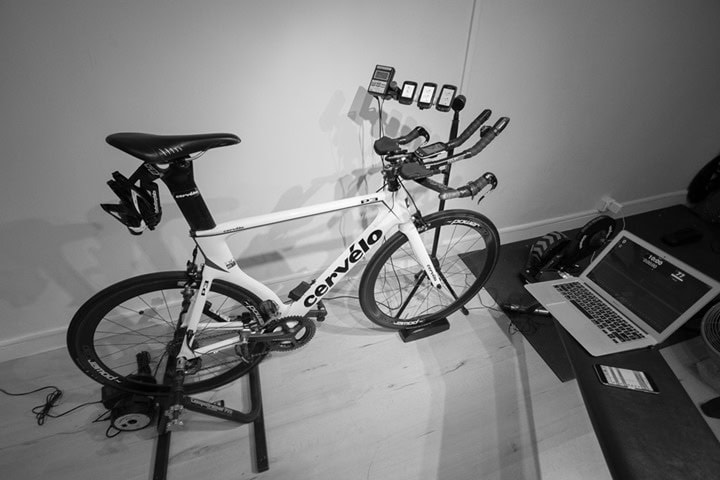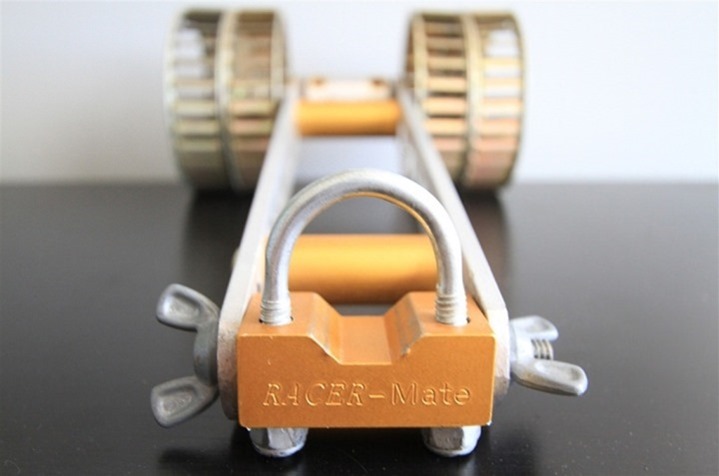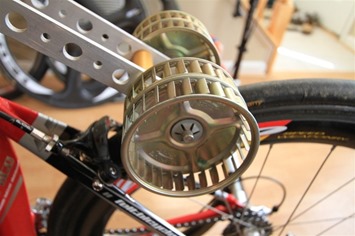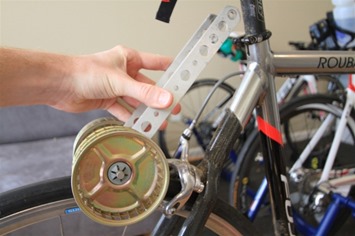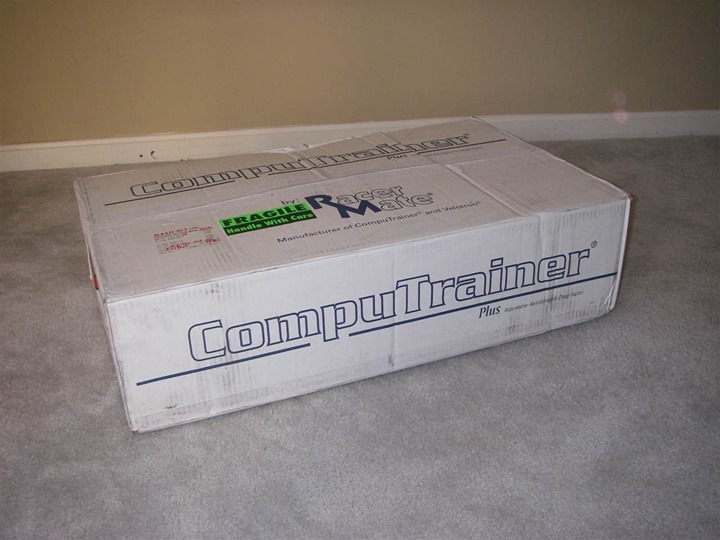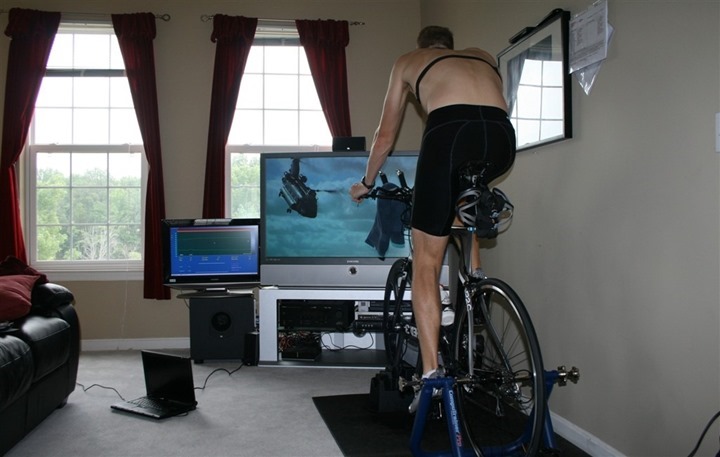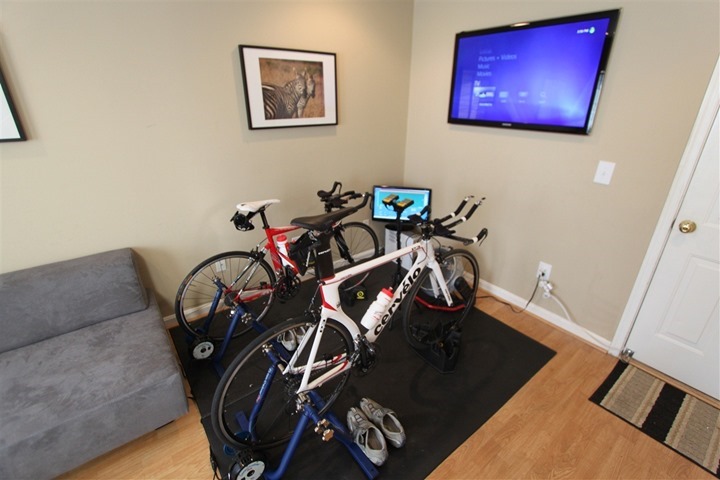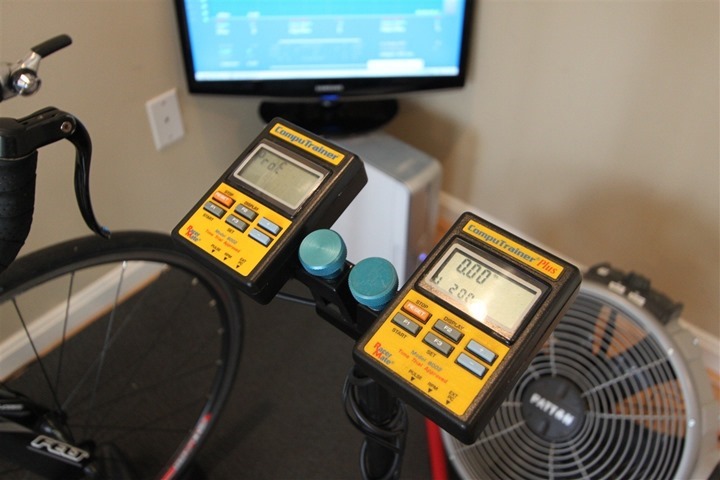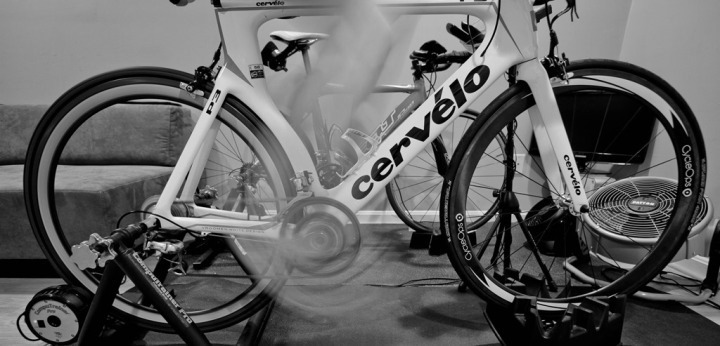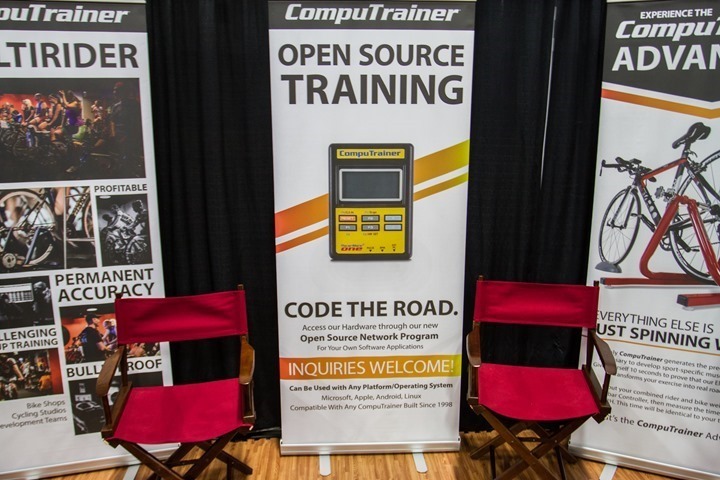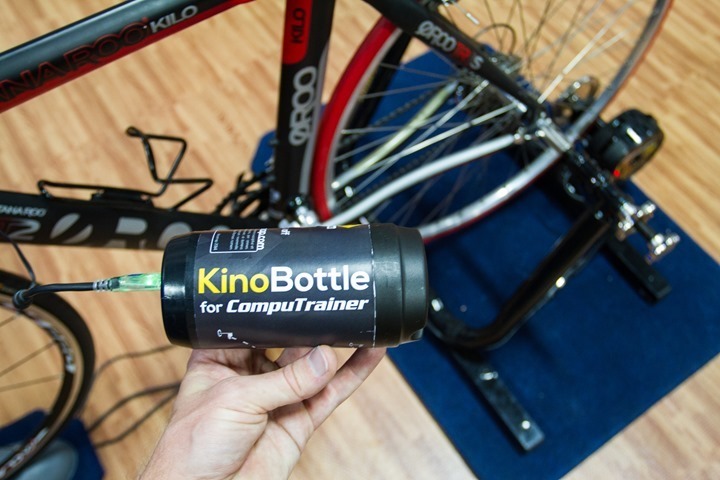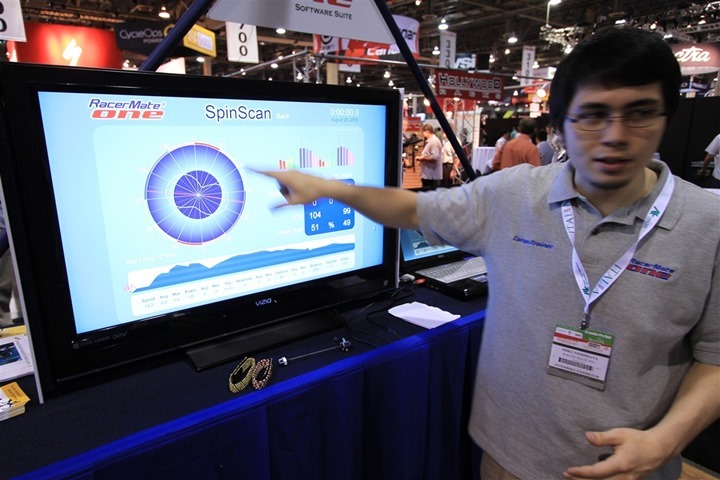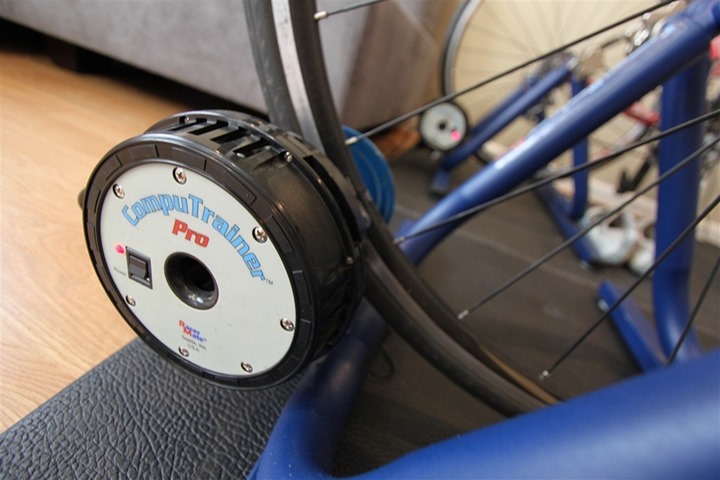Earlier today RacerMate, which has long made the CompuTrainer and other high performance trainers, notified sponsored athletes that the company is shuttering their CompuTrainer product line, as initially reported by Tom Demerly. By this evening I was able to confirm those reports directly with the company, as well as get a bit more detail. This marks a pretty significant event in the history books of indoor cycling. No company or product has had a bigger impact on the indoor training experience than the CompuTrainer has.
The e-mail sent to athletes was short and to the point. It is posted below in its entirety:
“It is with a heavy heart that those of us here at RacerMate must tell you that we are closing the doors on CompuTrainer. Technology and competition from larger companies have both eaten into the marketplace. As a small company with the premier indoor trainer in terms of performance and durability, we have found ourselves in a place where we cannot continue. It has been a marvelous 40+ years and we have enjoyed sharing in the victories and friendships we have made along the way.”
Chuck Wurster, Vice President
RacerMate Inc.
Seattle, WA
In e-mails with the company this evening, I have confirmed the above e-mail is correct. A more formal and public announcement from Chuck Wurster is to be sent sometime this week clarifying further on the exact details. However, the good news is that customers aren’t entirely left out in the cold. The exact details are still being finalized, but here’s roughly what’s planned.
The company will continue to offer support for new CompuTrainer units, within their standard 1-year warranty period. For those outside of this period, the company will continue to sell parts and trainers until those parts/trainers run out of stock. They’ll be treated on a first come, first served basis. At present, RacerMate notes that once those parts are gone, they’re gone for good. Additionally, they’ll be working to consolidate some of the general troubleshooting knowledge within the forums and their support teams, into more concrete troubleshooting guides and posting those.
Over 40 Years Ago:
While computer based training and the CompuTrainer may seem new to some, in reality the company has had a very long history. In fact, I even bought one of their 1976 trainers a while back…just for fun. You can read all about it here.
That trainer used wind to provide resistance, and was one of the first products the company made. Here’s a short little video clip I made of it in action some 6 years ago:
Of course, that wasn’t the product that most people know today. For the majority of folks these days, it’s the rugged CompuTrainer that’s most well known. This built like a tank trainer has been around in various iterations for nearly 30 years. It’s seen a handful of different colors, as well as slight changes to the trainer frame and resistance unit. It’s also seen variations around the controller – at one point even integrating with Nintendo. But by and large it’s remained the same, especially since around 2000.
It was actually the CompuTrainer that was my very first electronic trainer, which I purchased back in 2007. It’s funny, you can find my super-old ‘In-Depth Review’ on it here. My how times have changed (on so many levels!).
I would spend countless hours training for my first Ironman on it, as well as many more races after that. Me and that little yellow resistance controller were BFF’s.
In fact, so much BFF’s that when The Girl came along, we got another CompuTrainer (this time off eBay) – so we could ride side by side.
I even bought their nifty dual-controller holder stand for our trainer room at the time:
And this would serve as my main trainer for another half-decade more, until the original Wahoo KICKR came out. For the most part, the CompuTrainer worked without much issue. Not perfect of course, I’d occasionally get oddities around accuracy, drift, and spin-downs that couldn’t easily be explained. But those were rare, few and far between.
As any CompuTrainer user knows though – the real hassle was more around the cabling and wheel-on tightening mechanism than anything else. It got easier once I realized I was better off putting the handlebar controller on another object (as seen above), as that reduced complexity each time I moved the bike. But still, I would have loved to see a better locking system for quicker/easier removal of the bike.
Its accuracy was good, but never as perfect as people seem to believe now. History has a way of erasing some of that. The unit required a warm-up period of about 15 minutes. I found that a 10-minute period was too short, and even 15 minutes could be too short as well. If you didn’t complete the calibration, then your power numbers weren’t accurate. That’s still true of most wheel-on trainers today, but some of the higher end options like the Tacx Neo and Elite Drivo simply require no calibration at all (it’s not even an option), and they have higher accuracy levels than the CompuTrainer does. Still, once you understood its quirks, it was generally easy to get reliable power data.
Nonetheless – the CompuTrainer was a beast structurally. A nearly unbreakable beast in most cases, with only one unit needing resistance unit servicing once. It remains to be seen how long trainers like the Neo or KICKR last from a structural standpoint. Certainly one can point to various support cases here and there – but the same is true of any trainer brand, including the CompuTrainer. Only time will tell for those other units as to how long they last.
Then Came the Avalanche:
One could debate for extended periods of time about the precise start of where CompuTrainer’s troubles began. I’d place the epicenter between two specific points though:
A) TrainerRoad announcing their existence almost 6 years ago (Summer 2011)
B) The Wahoo KICKR announced almost 5 years ago (Summer 2012)
But in reality, the announcement of the Wahoo KICKR is more than meets the eye. See, the reason the Wahoo KICKR was ever created was because Wahoo Fitness founder Chip Hawkins wanted a better control pad for his CompuTrainer at the time. He actually went as far as making a prototype of the device, which he offered to RacerMate for the CompuTrainer. When RacerMate declined (according to Chip), that got him thinking about building a trainer of his own.
Ultimately, it’s that resulting product (the Wahoo KICKR) that would kick off the arms race that would put the CompuTrainer out of business. Once the KICKR came out, it specifically ushered in an era of open trainer application software development, an area that RacerMate resisted at all costs and every turn.
It was just before this point that Nate Pearson and Reid Weber, founders of TrainerRoad, were struggling with nearly the very same thing: How to control the CompuTrainer, and soon other trainers like the CycleOps PowerBeam? TrainerRoad was in effect one of the first apps to catch-on and ‘go big’ as an indoor trainer platform that was trainer agnostic. Sure, there were a handful of other apps out there like Tour de Giro and I believe even PerfPro. Plus apps from the trainer companies themselves – but none of these ended up being the market driver that TrainerRoad was.
When Wahoo launched their KICKR at Eurobike 2012, TrainerRoad was right there alongside them in the booth. That’s a relationship bond that’s held to this day (arguably even to the detriment of some other companies). Other trainer companies such as CycleOps quickly got on board with TrainerRoad to offer integration capabilities. And a year later, companies Tacx and Elite started to realize the same, heck – even Kinetic trainers did. Though it would take Tacx and Elite another year to finally embrace openness across their entire product line.
But it’s that platform openness that would ultimately kill the CompuTrainer. By and large, folks didn’t want to deal with wires. And by and large, people wanted the flexibility to use their iPads, phones, tablets, and other wireless goodness with their trainers. Whereas the CompuTrainer integration was limited to wired solutions that often required reverse engineering. As well as being mostly limited to companies that reverse engineered the CompuTrainer integration.
CompuTrainer attempted to stop-gap the wireless issue by partnering with Kinomap for a converter of sorts (2014). But the pricing was a hard pill to swallow, and the end-state product was more hacky than widely adopted. They then came back a year later with plans to enable their controller with WiFi (2015). But ultimately that never panned out, with the product never shipping (2016). In many ways that WiFi offering was ill-focused. It didn’t actually solve the issue that people wanted: ANT+ & Bluetooth Smart. It was attempting to create a new standard that trainer app developers weren’t really interested in dealing with.
Of course, all of this also ignores the RacerMate One software project that was occurring at the same time. That’s the one where RacerMate got into a contract stand-off with their 3rd party developer of the suite. That lasted over a year, with the software being held hostage in exchange for additional money from RacerMate.
While the exact dispute details remain somewhat unclear – the end-state reality was incredibly clear: It hosed CompuTrainer sales, and gave 3rd parties even more of an advantage over what quickly became outdated software. Once it was finally released to market, it was antiquated at best.
These days, Wahoo Fitness sits at 89 employees, while TrainerRoad sits at 47 employees. And that ignores the rest of the trainer app industry that benefited from trainer openness. Companies like Zwift sit in the same employee count ballpark, and there are over 20 other apps that support open trainer standards today. All of them having anywhere from one to dozens of employees. The demand for interactive trainers, and correspondingly the market supporting it, has exploded with offerings.
As you can see, it would be easy to say “The KICKR killed the CompuTrainer”, and in some ways that’s true. But it didn’t have to kill the CompuTrainer. The process took nearly five years from start to finish, and at any point along the way the simple act of adding in ANT+ & Bluetooth Smart would likely have saved the product. Sure, they’d eventually have to compete in other product feature areas, but with the CompuTrainer’s name recognition and brand reputation – they had the hardest part solved.
Going Forward:
Of course, it remains to be seen what happens with the company going forward. If they don’t have too much (or any) debt, then it’d actually make for a ripe target for acquisition. The challenge as you saw above was never that it was a bad product per se, but rather, it was just an outdated product. Still, the company says they don’t plan to do so, and will instead focus on selling off existing trainers and parts.
Still, one has to believe there will be some interest from outsiders on turning around the company (I’ve already heard of interest from a few industry folks). Ironically enough, folks like Kinomap showed that they could make the CompuTrainer 3rd party app friendly with little more than a Raspberry Pi board (cost = almost nothing). The time and skills required to make the CompuTrainer ANT+ FE-C and Bluetooth Smart compatible are pretty trivial. Had the company done these modest updates, people would have continued to look past the 1980’s style hardware design, because they knew it would truly last 30 years.
All of which makes the remaining company/assets ideal for acquisition. Assuming they sold it to anyone in the industry with any desire to make money, that entity would be able to very quickly turn it around and give it re-birth with a small wireless adapter plugged in the back (and otherwise left as-is). Heck, they’d likely even be able to do so before Eurobike/Interbike 2017, coming up in 6 months to the day. A prospective buyer could probably enlist companies like North Pole Engineering and others to quickly put together a wireless solution, while outsourcing the remainder of the software development to companies like Kinomap – which has recently branched into offering such OEM solutions. None of which would cost very much, and both of those companies are as deep and close as you get to understanding every aspect of the trainer communications world.
Of course, RacerMate says that isn’t in the cards. Though history has shown that in most cases when someone opens up a briefcase full of money, companies tend to change their mind quickly.
No matter if that happens though – there’s no denying CompuTrainer’s place in the history books as the epicenter of interactive training. For that, they should absolutely be congratulated . Plus…there’s still two of them in the DCR Cave for when I need accurate wheel-on trainer testing of power meters. I suspect and hope they’ll last another 30 years.
Thanks for reading.


























